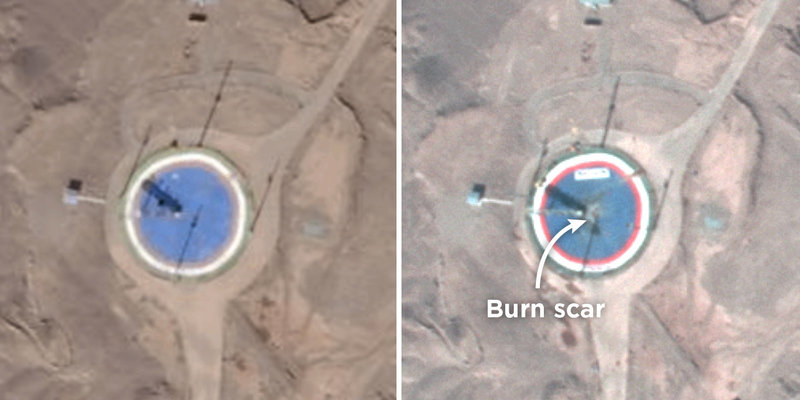February 15, 2019

The second effort in a month to orbit a satellite appears to have failed, with Iran’s space program marching backward rather than forward.
Imagery taken by a DigitalGlobe satellite, a private US satellite firm, shows a rocket sitting February 5 on the launch pad used for Safir satellite launching rockets. Another DigitalGlobe photo taken the next day shows no rocket, but a burn scar, indicating the rocket had been launched.
The scar means the rocket was launched successfully. There was no big damage area that would have resulted if the rocket had blown up on the launch pad. But Iran has made no public announcement of a new satellite, telegraphing that it did not succeed in putting one into orbit.
Michael Elleman, a physicist with the International Institute for Strategic Studies (ISIS) in Washington, DC, told US National Public Radio the absence of any apparent crash adjacent to the pad suggests it flew at least 10 seconds.
He said Iran’s Safir rocket has been fired nine times, assuming the scar was indeed produced by a ninth Safir launch. Four Safir launches have put satellites into orbit, although none has been put in a very good orbit so that none has survived even 100 days in orbit before falling into the atmosphere and burning up. The other five Safirs all failed, a poor record for a rocket by international standards.
Iran launched a Payam satellite January 15 aboard a larger Simorgh rocket. Surprisingly, Iran announced that launch and admitted that it failed to put the satellite into orbit. Iran said the top or third stage of the rocket failed.
Defense Minister Brigadier General Amir Hatemi then said Iran would have a second satellite launch, of the Doosti (Friendship) satellite, using a Safir rocket, before February 1. Nothing was announced by then. (It was strange that the defense minister made the announcement since Iran always asserts that its satellite program is entirely civilian.)
On February 3, Telecommunications Minister Mohammad-Javad Azari-Jahromi said the Doosti satellite launch would take place “soon.” That same day he announced that a fire at Iran’s Space Launch Center in Semnan province had cost the lives of three staffers.
The burn scar indicates the Doosti launch was attempted February 5 or 6.
Iran has usually attempted its satellite launches in the first week of February to coincide with the annual celebrations that week marking the revolution.